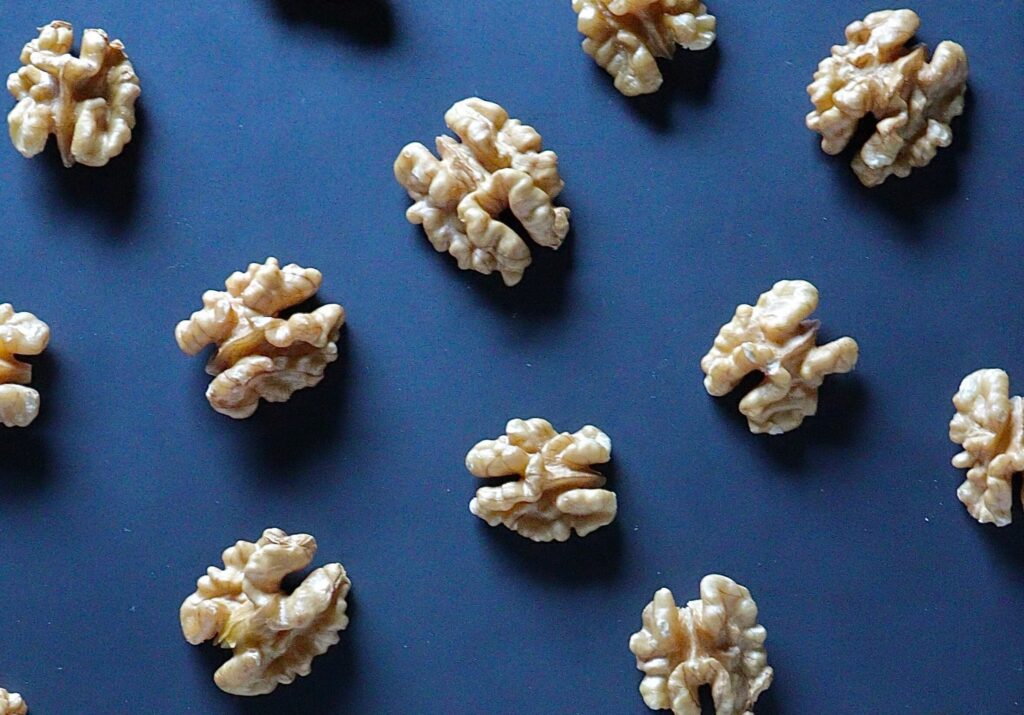
Did you know that anxiety, fatigue and carb cravings may actually be signs that your blood sugar isn’t balanced? Stabilizing your blood sugar is one of the single best things that you can do for your health, especially as a woman. It helps to keep your brain healthy, energy levels stable and your mood balanced, among other things. So let’s break down the ins and outs of blood sugar, why insulin resistance arises, how carbs impact blood sugar and the signs that you may have low or high blood sugar. You’ll also learn tangible strategies for how to balance your blood sugar, both from a nutrition and lifestyle standpoint.
So What Is Blood Sugar?
Glucose, a type of sugar, is your body’s main source of energy and comes from the foods you eat. And blood sugar, or blood glucose, refers to the concentration of glucose present in your bloodstream at any given moment. Your body tightly regulates your blood sugar levels to ensure that they remain within a narrow range, as both high and low blood sugar levels can have quite dramatic effects on your health.
Insulin, a hormone produced by your pancreas, plays a crucial role in regulating your blood sugar levels. After eating, your blood sugar levels naturally rise, prompting your pancreas to release insulin, which helps facilitate the uptake of glucose from your blood and into your cells for energy use or storage. Between meals, when your blood sugar levels are lower, your pancreas reduces insulin secretion, allowing your liver to release stored glucose to maintain blood sugar levels within a normal range.
Understanding Insulin Resistance and Blood Sugar
To visualize what’s going on with insulin and glucose, let’s use an analogy of a nightclub. In this case, insulin is the bouncer to the club, aka the cell. Glucose, or blood sugar, starts to knock on the door to the cell to get let in. And if insulin isn’t paying attention, or perhaps is not working efficiently, blood sugar will remain outside the cell, just hanging out there. This in turn keeps your blood sugar at a high level and you eventually get insulin resistance, where insulin stops paying attention to blood sugar banging at the door of the cell over time. Eventually, a bunch of other insulin friends come over to tell glucose, the bouncer, to open the door to the club, which is when blood sugar rushes into the cell.
To recap:
Insulin resistance is a condition where the cells in your body become less responsive to the effects of insulin, a hormone produced by your pancreas. Insulin is in charge of regulating your blood sugar levels by facilitating the uptake of glucose from your bloodstream into your cells, where it can be used for energy right away or stored for later use. So when you have insulin resistance:
- Your cells become less responsive to insulin’s signals and you take up less glucose from your bloodstream which leads to high blood sugar.
- To compensate for insulin not working properly, your pancreas pumps out even more insulin to try to lower your high blood sugar levels. This may work initially but over time your pancreas can get overworked and may be unable to produce enough insulin
- Persistently high levels of insulin in your bloodstream (hyperinsulinemia) typically occurs as your pancreas tries to overcome insulin resistance, which leads to metabolic dysfunction.
- Despite increased insulin production, your cells continue to resist insulin which leads to constantly elevated blood sugar levels – a condition called hyperglycemia. This can cause type 2 diabetes and other metabolic disorders.
Symptoms of High Blood Sugar (Hyperglycemia):
- Frequent urination: Excess glucose in your bloodstream causes your kidneys to work overtime to remove the excess sugar from your body via your pee.
- Strong cravings for carbs: With insulin resistance, your cells take up less glucose causing your body to crave carbs to fuel the cells that aren’t getting enough glucose.
- Increased thirst: Frequent urination may cause dehydration and thirst
- Fatigue: When your cells can’t properly use glucose for energy you’ll likely feel sluggish, weak or tired, especially after meals.
- Increased hunger: Despite high blood sugar levels, your cells may not be able to access glucose effectively which leads to feelings of hunger
- Slow Healing of Wounds: High blood sugar levels can impair the body’s ability to heal wounds.
- Weight loss: Although it may sound counterintuitive, when glucose is high in your blood but not in your cells, your body isn’t getting energy where it needs it most so you may experience weight loss in the short term, before your body turns to other methods of dealing with the high blood sugar.
Symptoms of Low Blood Sugar (Hypoglycemia):
- Sweating: Experiencing clammy or cold sweats, even in cool temperatures, is a typical symptom since your body is trying to raise its blood sugar back to a normal level.
- Shaking: Low blood sugar levels can cause trembling or shakiness, particularly in your hands, as your fight or flight stress response is activated and your body is flooded with stress hormones.
- Hunger: Your body responds to low blood sugar by signaling hunger so that you consume carbs to elevate your blood sugar levels.
- Irritability or mood issues: Hypoglycemia can cause irritability, mood swings, or feelings of anxiety or nervousness.
- Dizziness: Your brain requires a constant supply of glucose to function properly so when it’s temporarily deprived you may feel neurological symptoms like light headedness, confusion or dizziness.
- Rapid heart rate: Low blood sugar levels not only launch your body into fight or flight, but also trigger the release of hormones like adrenaline, cortisol and glucagon. While these hormones can help to raise your blood sugar by stimulating glucose release and/or production, they also cause a rapid heart beat (particularly adrenaline)
- Fainting: In more severe cases of hypoglycemia, you may experience loss of consciousness. This is more common in individuals with diabetes who use insulin or other medications to lower blood sugar levels.
Nutrition Strategies for Balancing Blood Sugar
- Eat consistent meals. Try to eat every 3-4 hours throughout your day to support stable blood sugar levels. Going too long without eating or just grazing throughout your day are both sure fire ways to get wonky blood sugar levels.
- Eat within an hour of waking up. Generally aligning your pattern of eating with your circadian rhythm improves various metabolic markers, including blood sugar. In particular, having something to eat within the first hour of getting up in the morning can be extremely supportive so that you’re not fasting for extended periods of time. Not to mention coffee on an empty stomach is definitely going to spike your blood sugar!
- Balance your meals. Instead of consuming carbs in isolation (what we like to call a naked carb), you want to pair them with other macronutrients – particularly fat and protein. This simple trick significantly slows down the digestion of carbs so that you don’t get big blood sugar spikes and crashes in your blood sugar and insulin levels post-meal. Filling your plate with non starchy veggies that have lots of lots of fiber will also elongate that blood sugar curve.

Herbs and Supplements That Balance Blood Sugar Levels
- Magnesium plays a crucial role in insulin sensitivity and glucose metabolism (4).
- Myoinositol, a form of inositol, improves insulin sensitivity and promotes glucose uptake into your cells which helps to maintain normal blood sugar levels. Additionally, it exhibits anti-inflammatory and antioxidant properties, potentially reducing inflammation and oxidative stress associated with insulin resistance.
- Berberine is a buzzy compound that is found in plants like goldenseal, barberry and Oregon grape. Research suggests that berberine can improve insulin sensitivity, reduce insulin resistance, and lower blood sugar levels (2).
- Chromium is a trace mineral that plays a role in carbohydrate and lipid metabolism. Some studies suggest that chromium supplementation may improve insulin sensitivity and glycemic control in people with insulin resistance or type 2 diabetes (3).
- Alpha Lipoic Acid is a powerful antioxidant that has been shown to improve insulin sensitivity and reduce oxidative stress in individuals with insulin resistance or type 2 diabetes. ALA may also help reduce peripheral neuropathy symptoms associated with diabetes (5).
- Probiotics may promote blood sugar balance by modulating gut microbiota, producing short-chain fatty acids that improve insulin sensitivity, reducing inflammation, enhancing gut barrier function, and regulating appetite and energy metabolism through interactions with your gut hormones (6).
- Essential fatty acids like omega-3 and omega-6 fatty acids can be really helpful in balancing blood sugar. Omega-3 fatty acids, found in fatty fish, flaxseeds, and walnuts, have been shown to enhance insulin sensitivity and reduce inflammation, while omega-6 fatty acids, found in sources like avocado oil and nuts, play a role in cell membrane integrity and signaling pathways involved in glucose metabolism (7).
- Cinnamon is shown to be as effective at promoting insulin sensitivity as the commonly prescribed diabetes medication Metformin (1)! Plus, you likely already have cinnamon in your kitchen and it’s insanely easy (and delicious) to add to meals and snacks.
Lifestyle Strategies for Blood Sugar Balance:
As dietitians, we obviously believe that food is extremely impactful when it comes to blood sugar and insulin resistance. But the lifestyle pieces are just as important and are often, unfortunately, neglected. You could be eating the most blood sugar supporting diet in the world but if your lifestyle is disturbing your blood sugar, foods and supplements won’t change a thing. So here are a few lifestyle factors you can start focusing on today:
- Getting enough sleep. Even one night of poor sleep has been found to impact your fasting blood sugar and insulin levels. Simply getting adequate sleep is a great place to start.
- Reducing stress. Emotional and physical (like intermittent fasting) stressors disturb blood sugar and create more insulin resistance.
- Be mindful of the type of exercise you’re doing. This one is a bit of a Goldilocks situation where both too much and too little exercise can negatively impact your blood sugar and insulin sensitivity. The main thing to focus on is establishing a well rounded, supportive movement routine that is flexible. One of the absolute best forms of exercise for promoting blood sugar balance is just simply walking. One study found that 2-5 minutes of walking after eating a meal reduces any post-meal blood sugar spikes.
Want more support in eating healthier and losing weight?
By working with one of our Registered Dietitian Nutritionists at Michelle Shapiro Nutrition LLC, you will receive personalized recommendations and one-on-one nutritional counseling to help you reach attainable goals in a way that fits your lifestyle.